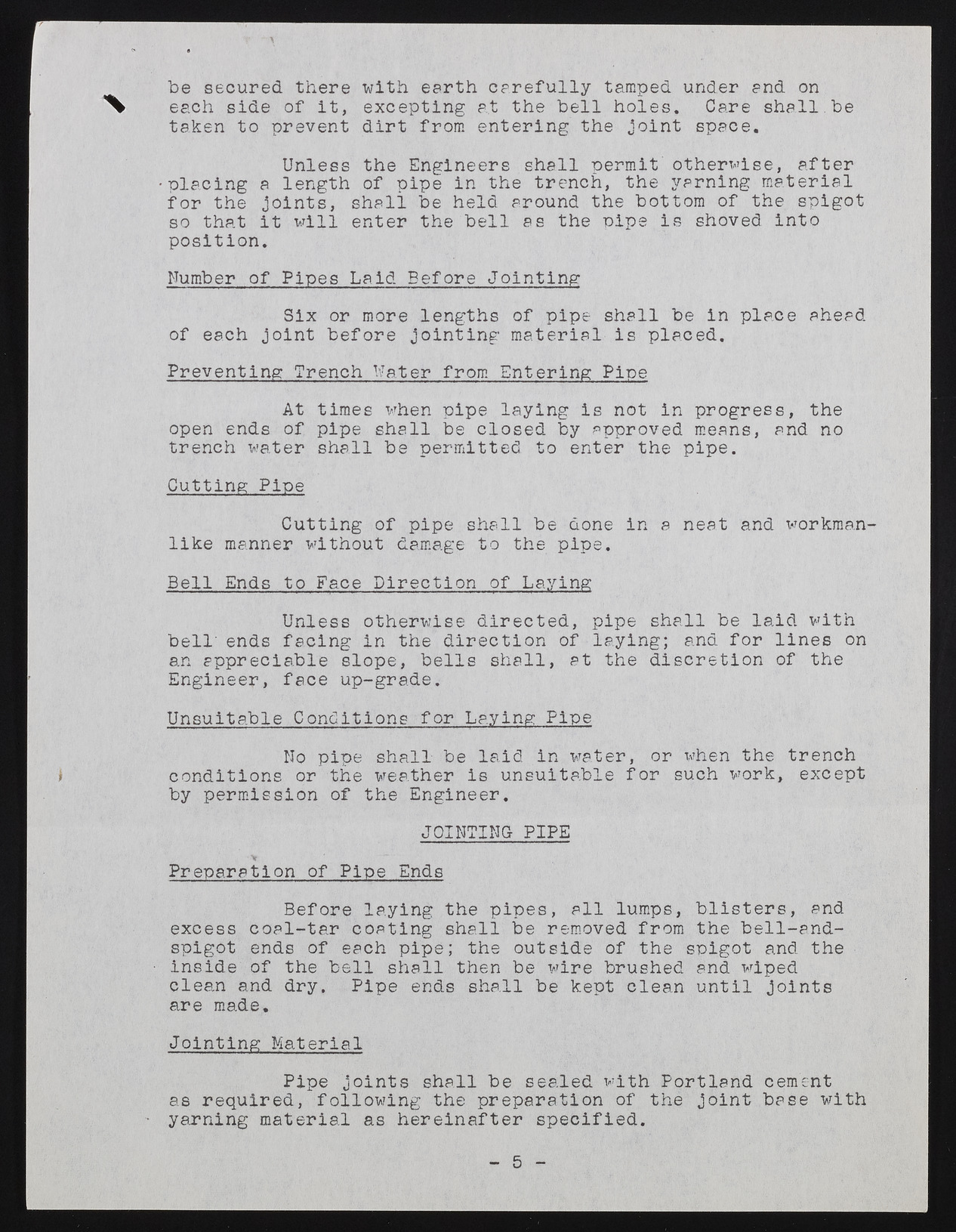Copyright & Fair-use Agreement
UNLV Special Collections provides copies of materials to facilitate private study, scholarship, or research. Material not in the public domain may be used according to fair use of copyrighted materials as defined by copyright law. Please cite us.
Please note that UNLV may not own the copyright to these materials and cannot provide permission to publish or distribute materials when UNLV is not the copyright holder. The user is solely responsible for determining the copyright status of materials and obtaining permission to use material from the copyright holder and for determining whether any permissions relating to any other rights are necessary for the intended use, and for obtaining all required permissions beyond that allowed by fair use.
Read more about our reproduction and use policy.
I agree.Information
Digital ID
Permalink
Details
More Info
Rights
Digital Provenance
Publisher
Transcription
be secured there with earth carefully tamped under end on each side of it, excepting at the bell holes. Care shall.be taken to prevent dirt from entering the joint space. Unless the Engineers shall permit otherwise, after •placing a length of pipe in the trench, the yarning material for the joints, shall be held around the bottom of the spigot so that it will enter the bell as the pipe is shoved into position. Number of Pipes Laid Before Jointing Six or more lengths of pipe shall be in place ahead of each joint before jointing material is placed. Preventing Trench Water from Entering Pipe At times when pipe laying is not in progress, the open ends of pipe shall be closed by approved means, and no trench water shall be permitted to enter the pipe. Cutting Pipe Cutting of pipe shall be done in a neat and workmanlike manner without damage to the pipe. Bell Ends to Face Direction of Laying Unless otherwise directed, pipe shall be laid with bell' ends facing in the direction of laying; and for lines on an appreciable slope, bells shall, at the discretion of the Engineer, face up-grade. Unsuitable Conditions for Laying Pipe No pipe shall be laid in water, or when the trench conditions or the weather is unsuitable for such work, except by permission of the Engineer. JOINTING PIPE Preparation of Pipe Ends Before laying the pipes, all lumps, blisters, and excess coal-tar coating shall be removed from the bell-and- spigot ends of each pipe; the outside of the spigot and the • inside of the bell shall then be wire brushed and wiped clean and dry. Pipe ends shall be kept clean until joints are made. Jointing Material Pipe joints shall be sealed with Portland cement as required, following the preparation of the joint base with - yarning material as hereinafter specified. 5

